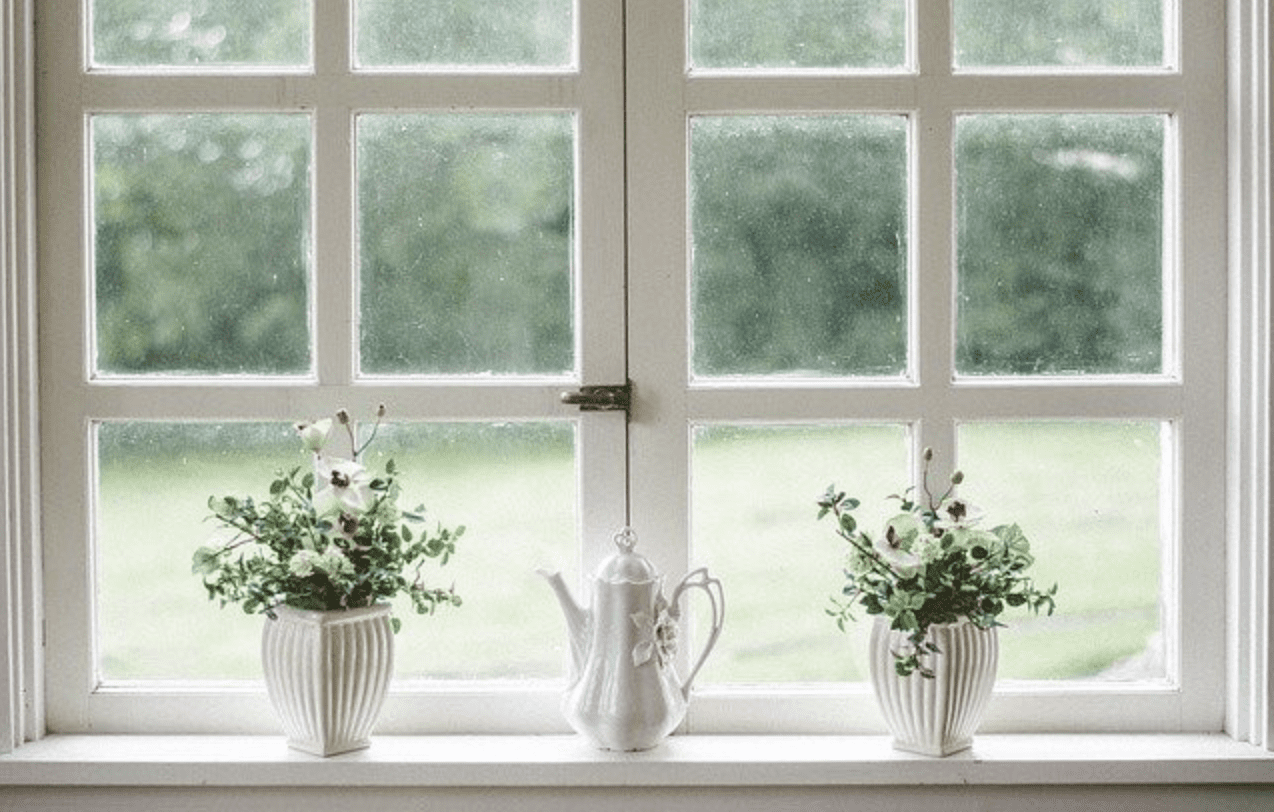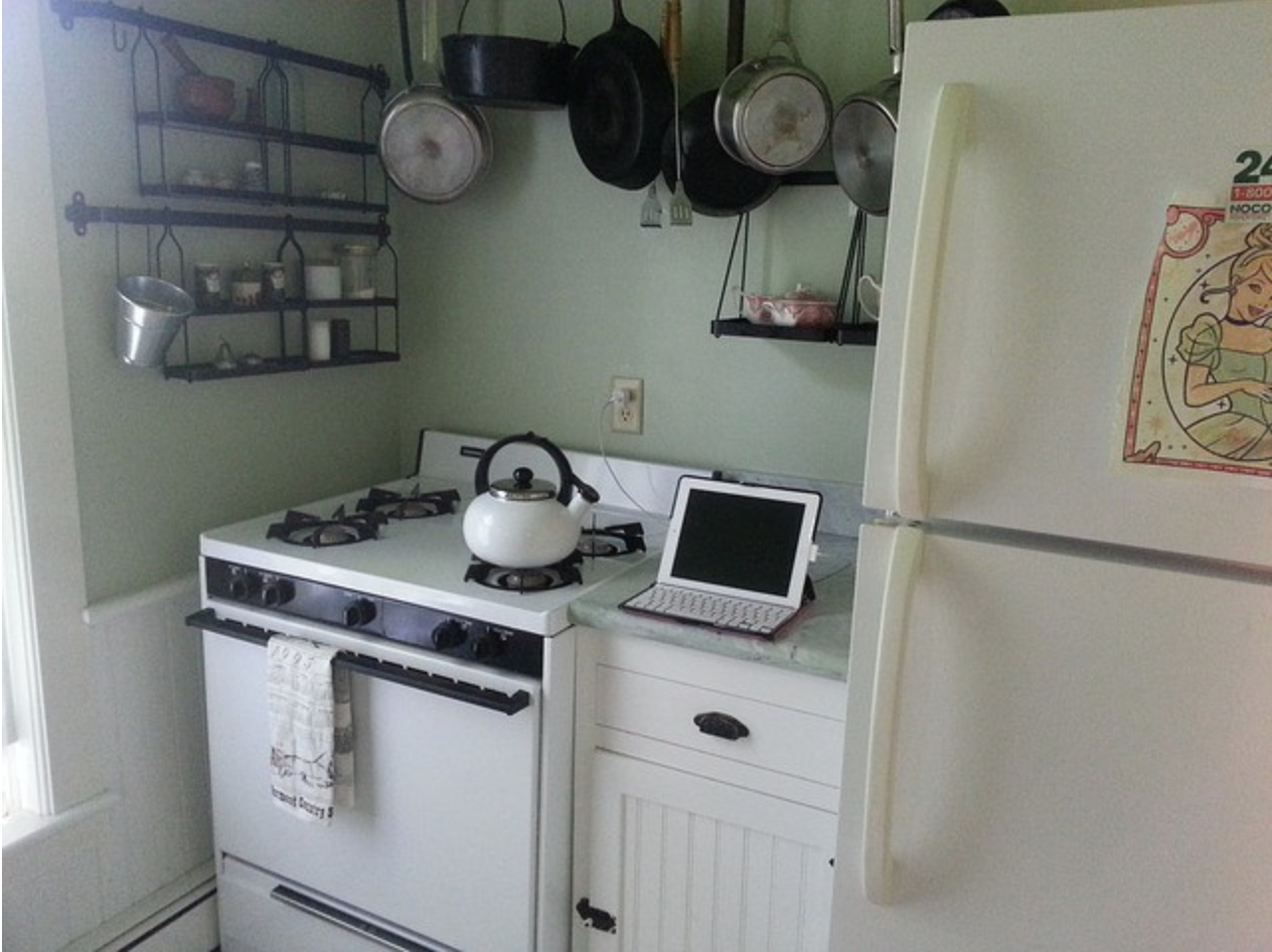It can be quite relaxing to enjoy a hot cup of tea while watching the rain through the window, but not if your window is leaking. Leaking windows are a big problem and can cause all kinds of damage to your home. Luckily, there are ways to fix them.
It rains a lot in Delaware, and our new house doesn’t have leaking windows right now, but I want to be ready for when it happens.
Before you attempt to seal a leaking window, you need to ensure that the cause of the leak can be fixed by sealing the window. The leak may come from openings between the window and the house frame, in which case you can use expanding foam to seal it. If the window is too old and frail, you may have to replace it.
Before you do any work, you have to determine why the window is leaking and where it is coming from.
What Are the Most Common Causes of Window Leaks?
Windows can leak for various reasons. Some of the most common ones are the following:
Poor House Design
Some houses are built without roof overhangs, which is a crucial architectural component to protect various areas of your house, including your windows.
Overhangs are extensions of the roof beyond the exterior wall. Some people think that roof overhands are simply aesthetics pieces.
While some roof overhands can certainly be aesthetically pleasing, they serve other essential functions. They protect exterior walls, doors, and windows from rain, snow, and the sun.
Improper Window Flashing
You can have the most efficient window perfectly framed, but without a properly installed window flashing water can easily enter your home.
Flashing is a crucial component of a window installation. Window flashing is done by installing a flat piece Z-shaped material, for example, aluminum, on the window’s frame.
The purpose of window flashing is to catch the rain that blows at an angle onto your window. Since we moved to Delaware, we have seen rain blowing fast at all angles. So, to have a correctly installed window flashing is crucial.
The video below from Tom Silva of This Old House shows how to flash a window and why it is important.
Age
Years of heavy rainfall, wind, sun, and natural elements will weaken even the strongest materials and well-built windows.
The sealant, an important component of the window installation, may be damaged due to age. But sometimes also due to poor installation or low-quality sealant. Modern PVC and metal window frames typically use effective synthetic sealants such as silicone, but even those don’t last forever.
Additionally, the whole house with time will go through changes, and the window, together with the frame, will move a bit. This can also cause leaks.
Where Does the Leak Come From?
Before you decide to fix the problem, you must identify the leak origin. Otherwise, you may end up sealing parts of the window which are perfectly fine, and overlook the real problem. Leaks can come from almost anywhere, but I will list the most common locations.
Roof and Walls
When a window is leaking, the cause is not always a faulty window. In some homes, especially older ones, leaks can come from the roof or the house walls. This often means there is some kind of damage present in the house, maybe even a structural one.
If you see water stains on the wall above the window or parallel and close to the top or bottom window frame, it frequently indicates a leak within the wall, not a window. The water will flow down and collect along flat surfaces. It may even enter the window frame. Unfortunately, if this problem occurs, you will not be able to fix it by sealing the window.
In older homes, the source of the leak can even be the roof. It is hard to recognize this problem, and it usually ends up with removing the window completely. This can be quite dangerous because roof and wall leaks can cause mold and even structural damage.
Window Frame
If you notice water in the window corners or places where glass and frames are connected, it usually indicates a damaged sealant. Luckily, these leaks are easy to repair, and you can even seal the window yourself—more on that below.
Weep Holes
Most windows with metal or vinyl frames have drain holes, also known as weep holes, which allow the excess water to drain away from the window frame. If those holes are clogged, the water will stay trapped and may find a way inside.
You should periodically clean these holes with a narrow and pointy, but not too sharp, object. We considered this one of 12 Critical Maintenance Skills Every Homeowner Should Have.
Window Sills
The exterior portion of a window sill has to be designed with a slope leading away from the window, downwards. Sill slopes are very important for water drainage, and if they are not working, the water will collect at the bottom of the window.
If those slopes are non-existing, the only way to resolve the problem is to re-install the window.
How Do I Seal a Leaking Window?
Once you determine that the cause of the leak can be fixed by sealing the window, you are ready to tackle the project. The most important skill to seal a window is knowing how to use a caulking gun. But you should not do it if you are not sure where the leak is coming from. If necessary, call a professional to figure out the cause.
The terms caulk and sealant are used interchangeably. Caulk, which may be made from latex or rubber, is more rigid than sealants after they dry.
A silicone sealant is often the best “caulk” you can use for windows.
You can follow these steps to caulk or seal your windows:
1. Choose an Appropriate Day
Weather will play an important role when you decide to recaulk the window. The day has to be dry with moderate temperatures because temperature extremes damage the drying caulk.
Obviously, if you have window coverings, you may have to remove them first.
2. Remove the Old Caulk
Remove the damaged caulk thoroughly.
3. Wash the Window
Clean your window with a non-abrasive detergent to remove all grease, oils, and debris that could affect the caulk. If you are installing a new window, using a wet sponge to clean the window’s frame may be all you need. The area has to be clean and dry before you caulk.
4. Apply Caulk or Sealant
Take the caulking gun and start applying it along the area from which you removed the old one. Do it at a slow but steady pace and avoid making pauses. Try to do it in one motion.
5. Check the Caulk
There should be no air gaps and bubbles. You can use your finger to smooth it out. If there are leftovers in the ends, carefully remove them with any knife you have.
6. Let it Dry
The caulk should be left to dry for about one day. Do not try to paint it or do anything to it in the first 24 hours. Some caulks are labeled as fast drying, but many factors, like humidity, can affect the timing.
And that’s it; your window is almost as good as new! The video below demonstrates how to do this.
Foam Sealing
Water may be coming through openings between the window frame and the wall. If this is the case, you can try foam sealing. You can follow these steps:
1. Clean the Area
Remove any dust, impurities, or grease from the area.
2. Read the Instruction on the Foam Can
Make sure to purchase a low expanding foam sealing made for windows. Some of the other types of foam expand too much and can actually bend your window jams. Follow the provided instructions to attach a dispenser. You should also shake the can for a certain amount of time. You should also wear eye protection glasses.
3. Apply the Foam
Make sure to hold the can upside down. Put the dispenser into the existing hole you wish to seal and press the trigger. You should test before you actually apply it, to see how much of the foam will exit, not to overfill the hole. If there is extra foam sticking out, remove it with a damp cloth. Repeat the process in every hole between the window frame and the wall.
4. Let it Dry
It usually takes around 30 to 60 minutes for it to be fully dry.
Below is a good video demonstrating how to achieve this.
Unfortunately, not all windows can be sealed for one reason or another. If you notice an installation problem or can’t determine the cause of the leak, you may be better off calling a professional to help you.
Related Posts:




